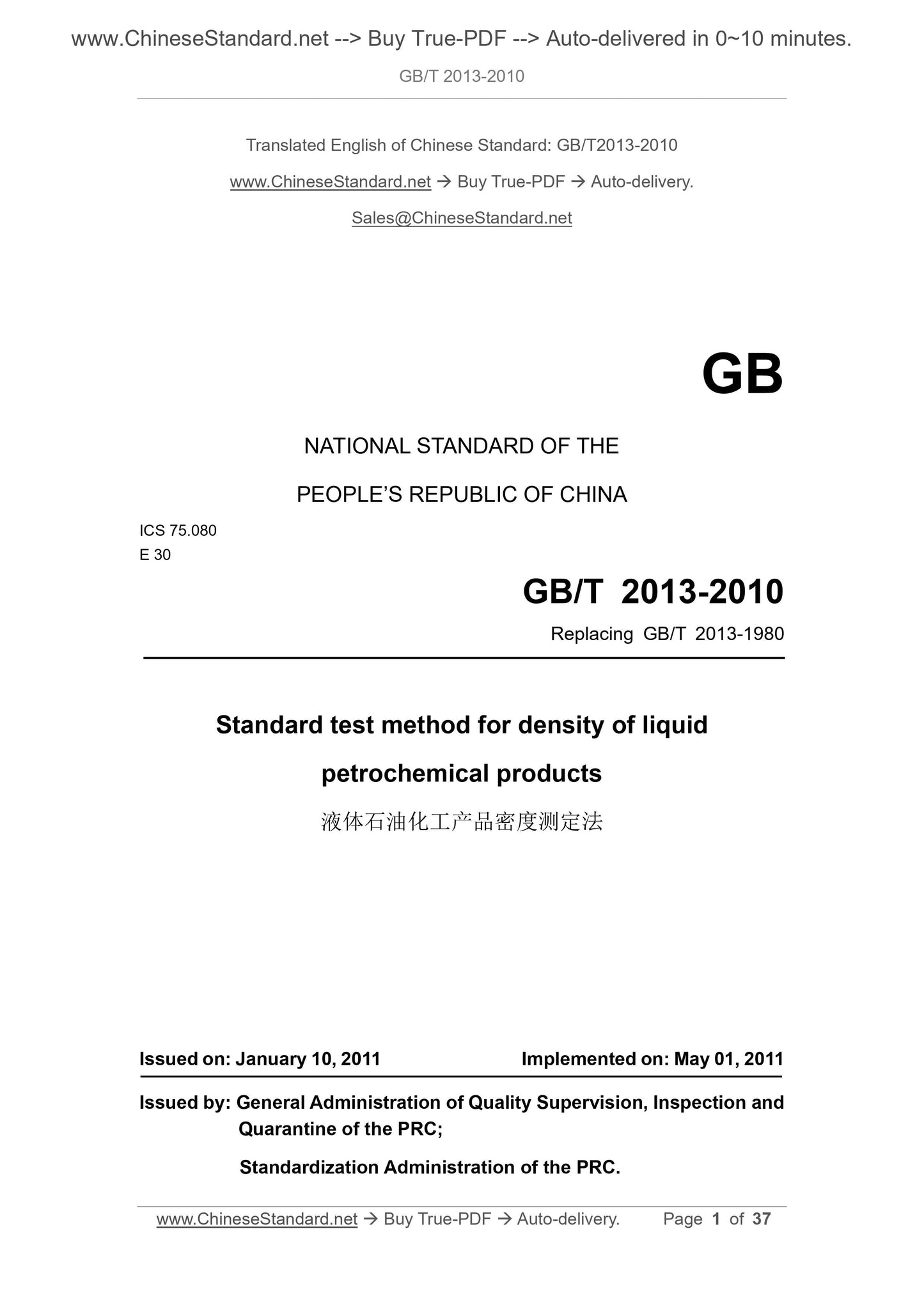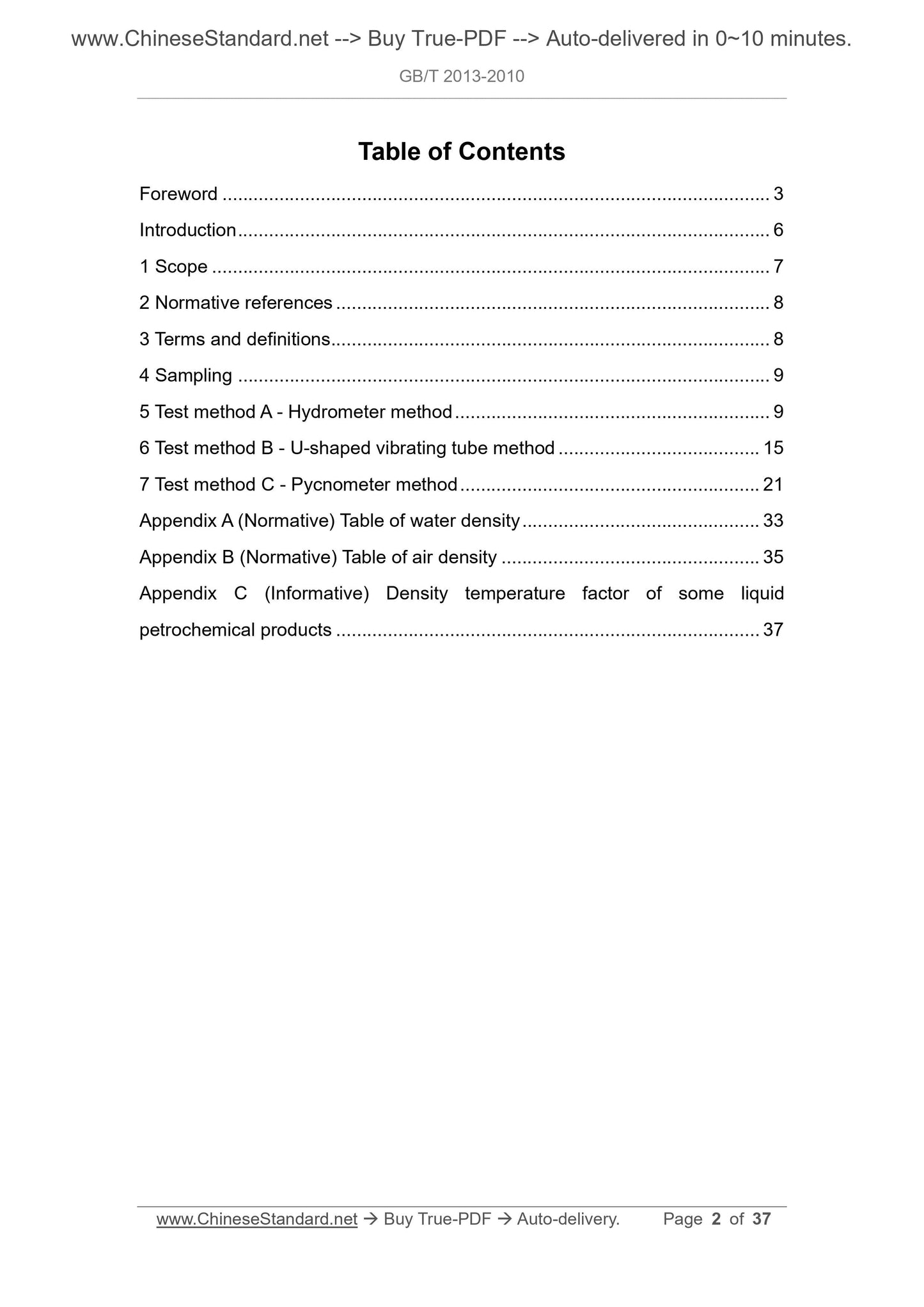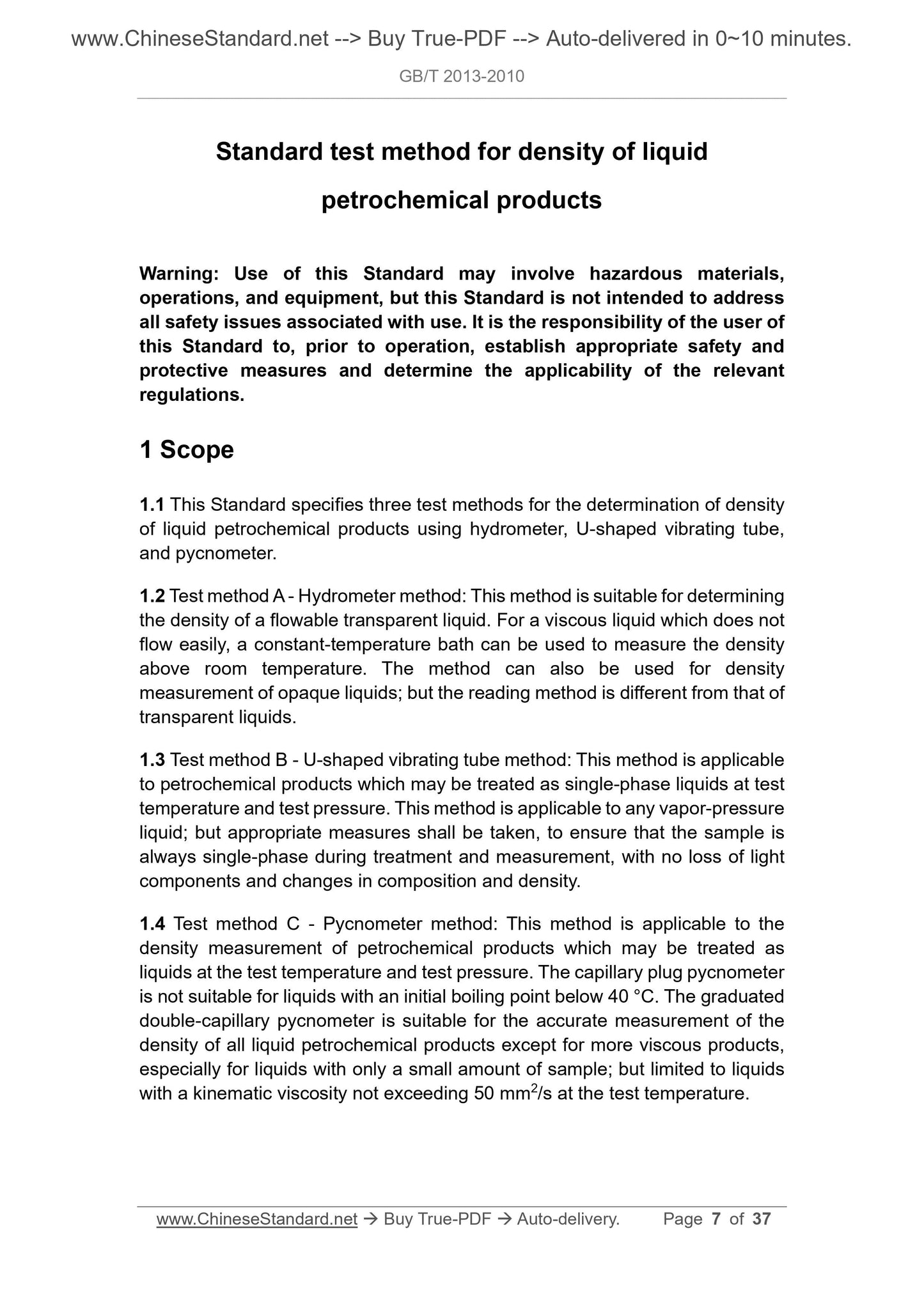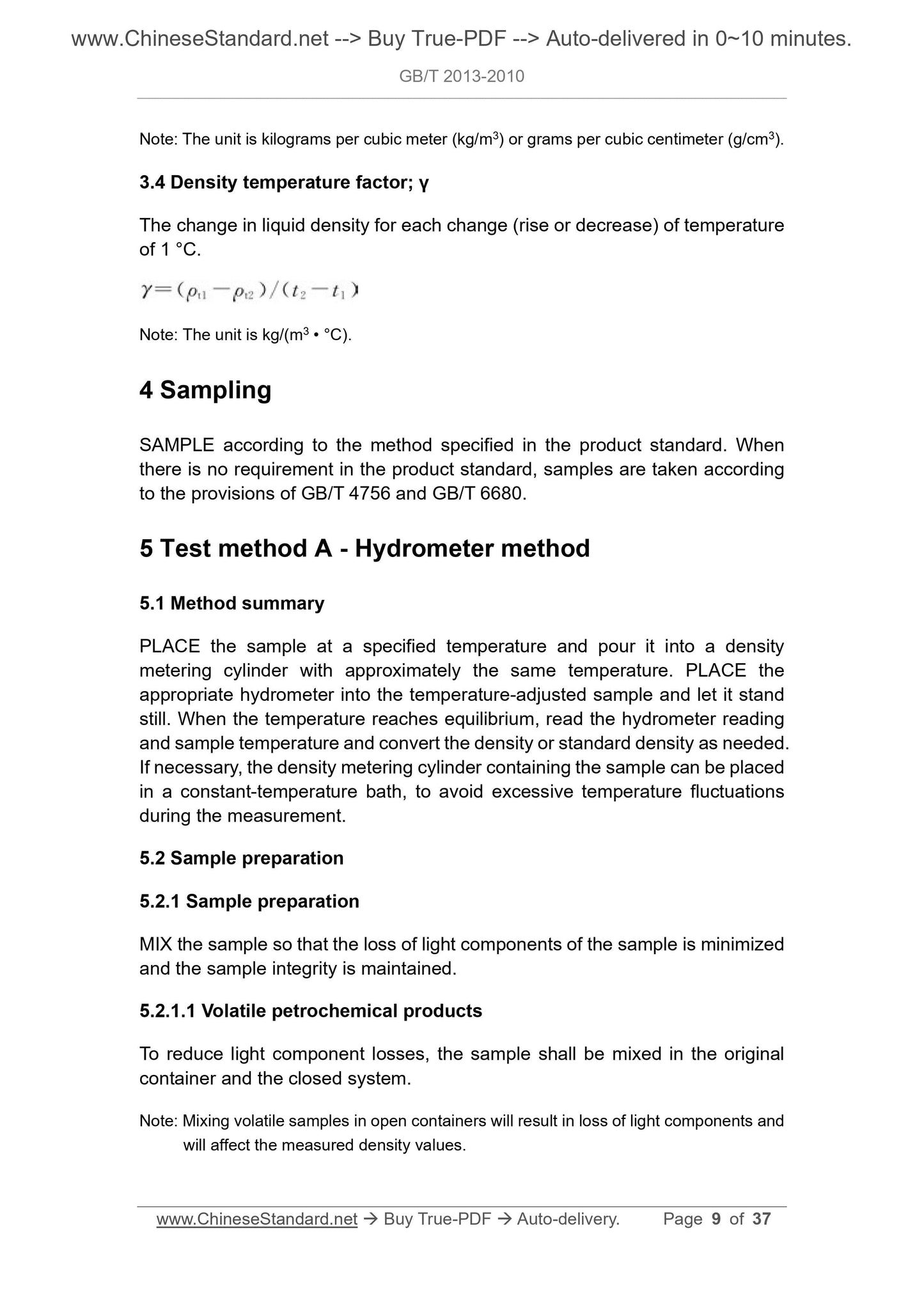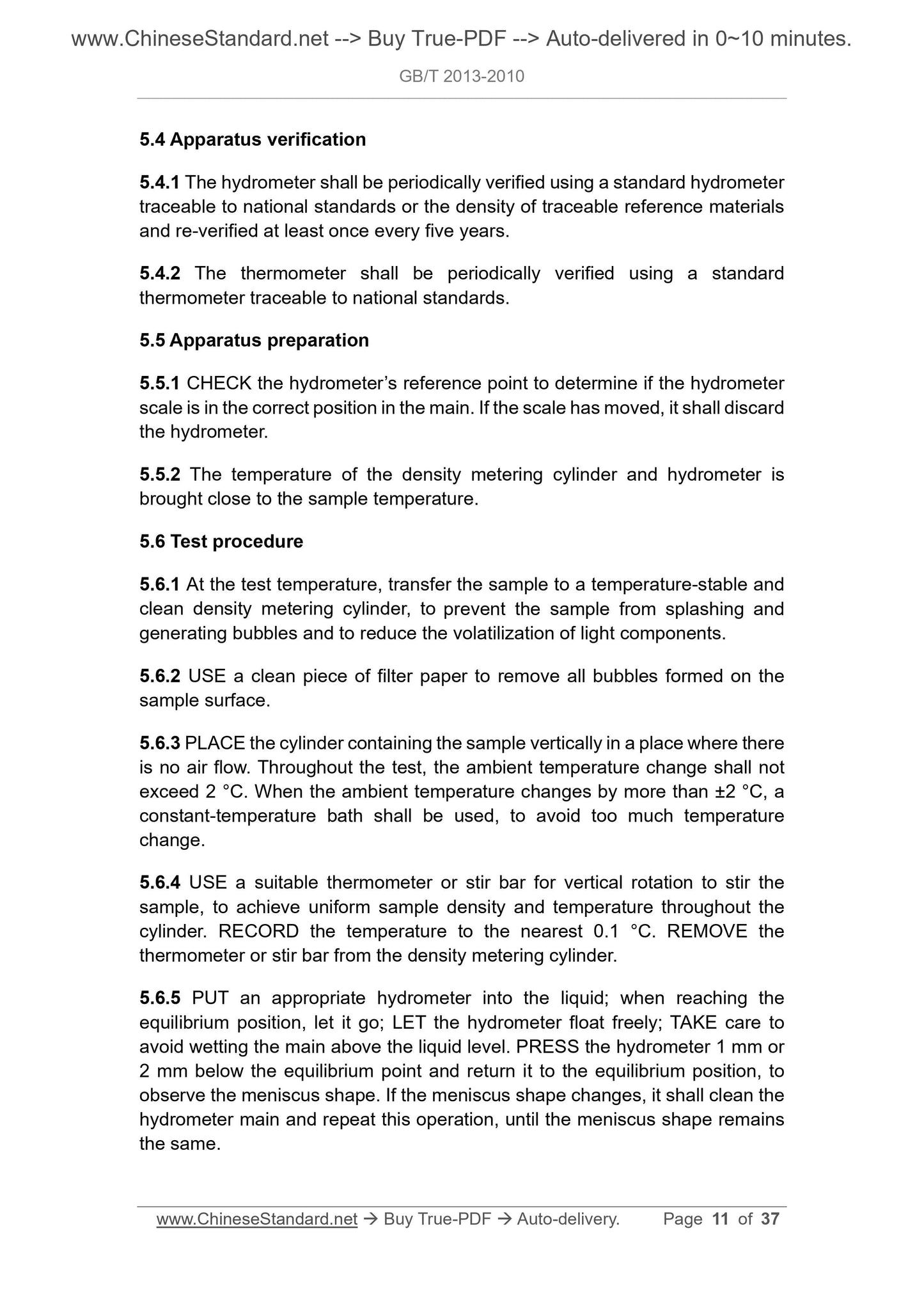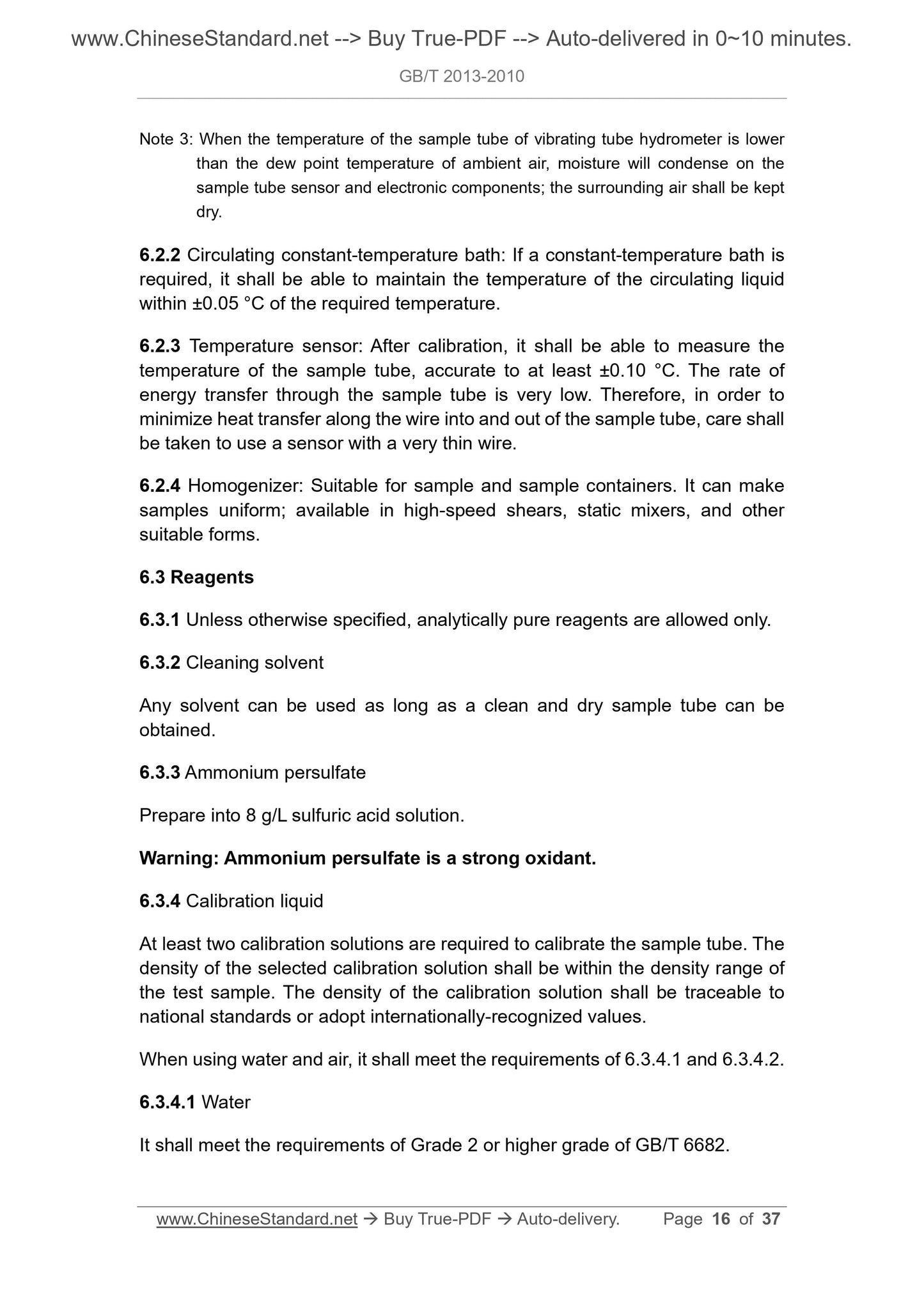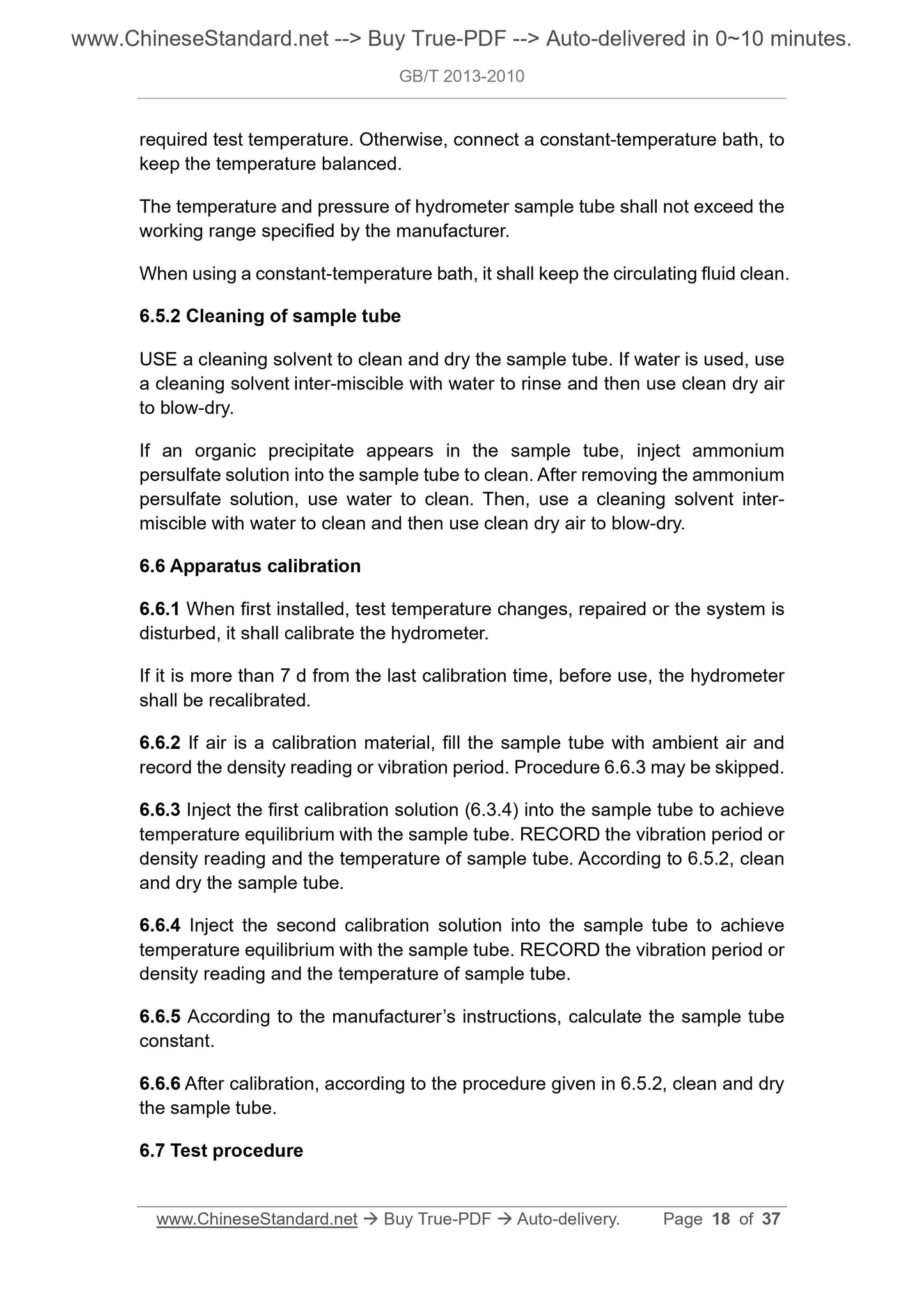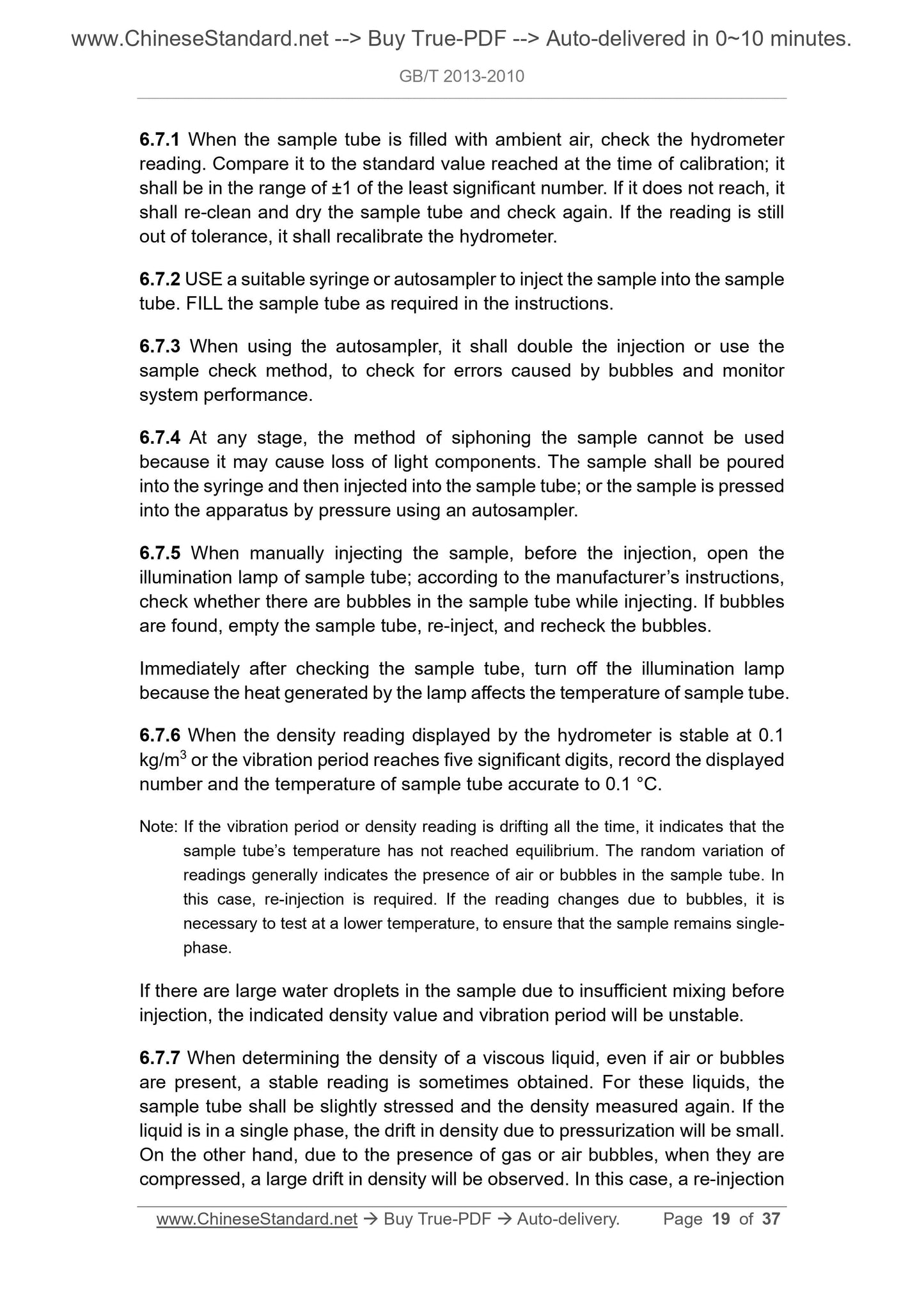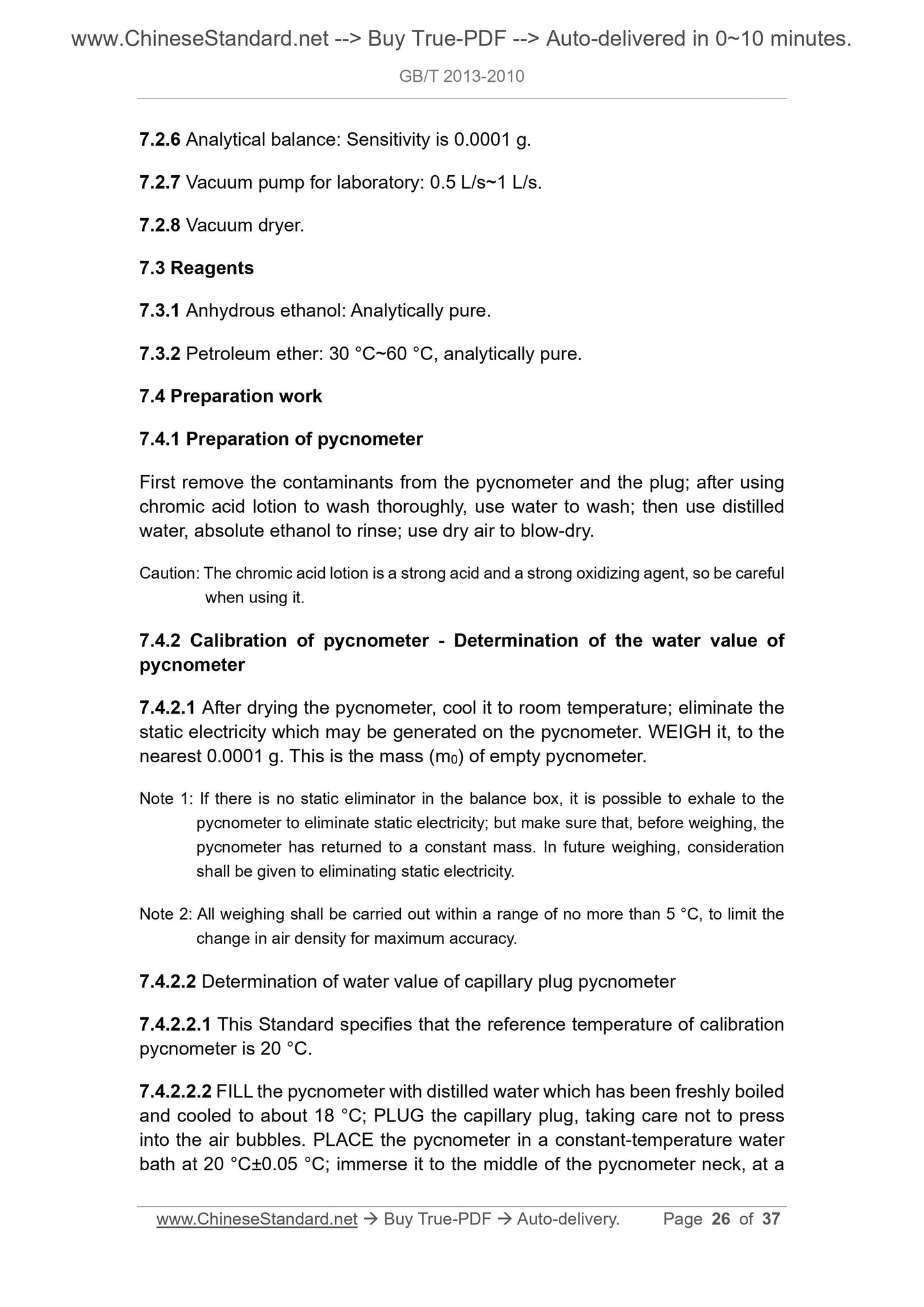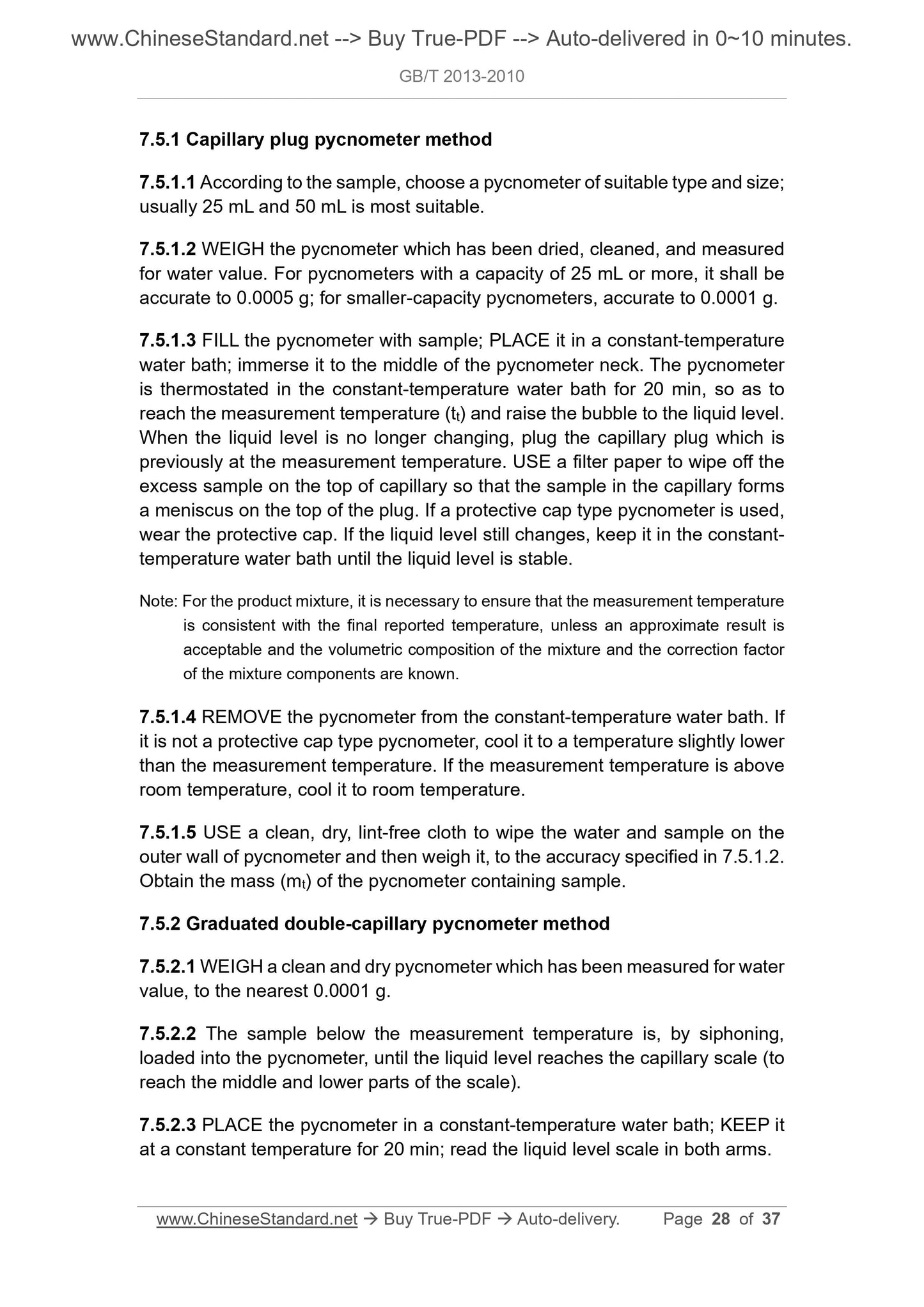1
/
of
10
www.ChineseStandard.us -- Field Test Asia Pte. Ltd.
GB/T 2013-2010 English PDF (GB/T2013-2010)
GB/T 2013-2010 English PDF (GB/T2013-2010)
Regular price
$190.00
Regular price
Sale price
$190.00
Unit price
/
per
Shipping calculated at checkout.
Couldn't load pickup availability
GB/T 2013-2010: Standard test method for density of liquid petrochemical products
Delivery: 9 seconds. Download (and Email) true-PDF + Invoice.Get Quotation: Click GB/T 2013-2010 (Self-service in 1-minute)
Newer / historical versions: GB/T 2013-2010
Preview True-PDF
Scope
1.1 This Standard specifies three test methods for the determination of densityof liquid petrochemical products using hydrometer, U-shaped vibrating tube,
and pycnometer.
1.2 Test method A - Hydrometer method: This method is suitable for determining
the density of a flowable transparent liquid. For a viscous liquid which does not
flow easily, a constant-temperature bath can be used to measure the density
above room temperature. The method can also be used for density
measurement of opaque liquids; but the reading method is different from that of
transparent liquids.
1.3 Test method B - U-shaped vibrating tube method: This method is applicable
to petrochemical products which may be treated as single-phase liquids at test
temperature and test pressure. This method is applicable to any vapor-pressure
liquid; but appropriate measures shall be taken, to ensure that the sample is
always single-phase during treatment and measurement, with no loss of light
components and changes in composition and density.
1.4 Test method C - Pycnometer method: This method is applicable to the
density measurement of petrochemical products which may be treated as
liquids at the test temperature and test pressure. The capillary plug pycnometer
is not suitable for liquids with an initial boiling point below 40 °C. The graduated
double-capillary pycnometer is suitable for the accurate measurement of the
density of all liquid petrochemical products except for more viscous products,
especially for liquids with only a small amount of sample; but limited to liquids
with a kinematic viscosity not exceeding 50 mm2/s at the test temperature.
Note: The unit is kilograms per cubic meter (kg/m3) or grams per cubic centimeter (g/cm3).
3.4 Density temperature factor; γ
The change in liquid density for each change (rise or decrease) of temperature
of 1 °C.
Note: The unit is kg/(m3 • °C).
Basic Data
| Standard ID | GB/T 2013-2010 (GB/T2013-2010) |
| Description (Translated English) | Standard test method for density of liquid petrochemical products |
| Sector / Industry | National Standard (Recommended) |
| Classification of Chinese Standard | E30 |
| Classification of International Standard | 75.080 |
| Word Count Estimation | 25,269 |
| Date of Issue | 2011-01-10 |
| Date of Implementation | 2011-05-01 |
| Older Standard (superseded by this standard) | GB/T 2013-1980 |
| Quoted Standard | GB/T 514; GB/T 4756; GB/T 6680; GB/T 6682; SH/T 0316 |
| Adopted Standard | ASTM D891-1995, NEQ |
| Regulation (derived from) | National Standard Approval Announcement 2011 No.1 (Total No.166) |
| Issuing agency(ies) | General Administration of Quality Supervision, Inspection and Quarantine of the People's Republic of China, Standardization Administration of the People's Republic of China |
| Summary | This standard specifies the use of a densitometer, three test methods U- tube vibration and pycnometer density of liquid petrochemical products. Test Method A- density meter method: This method is suitable for measuring the density of free-flowing transparent liquid, for easy flow of LA thick liquid, you can use the constant temperature bath, in the case of higher density was measured at room temperature. This method can also be used to measure the opacity of the liquid density, but different from the method of reading a transparent liquid. BU vibration test methods tube method: This method is suitable for testing at the test temperature and pressure can be treated as a single phase liquid petrochemical products, This method is applicable to any liquid vapor pressure, but to take appropriate measures to ensure that the sample handling and a single phase during the measurement period is always, and without loss of light components and changes in the composition and density. Test Method C- pycnometer method |
Share
